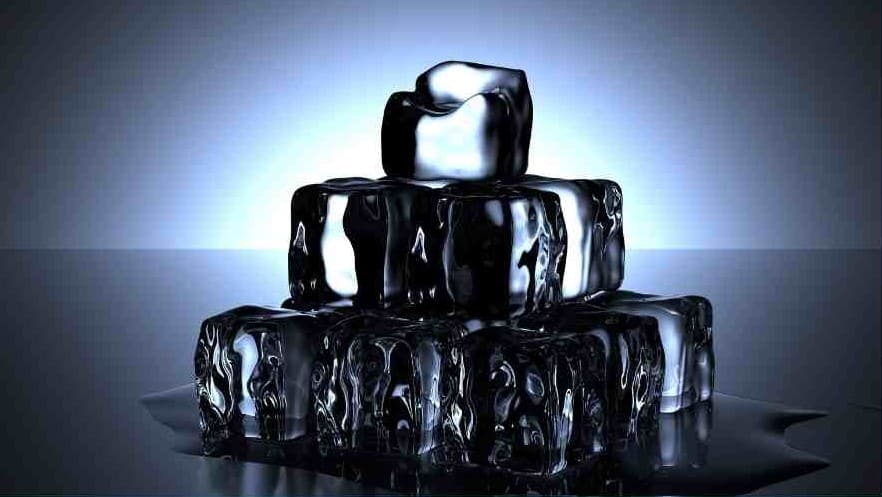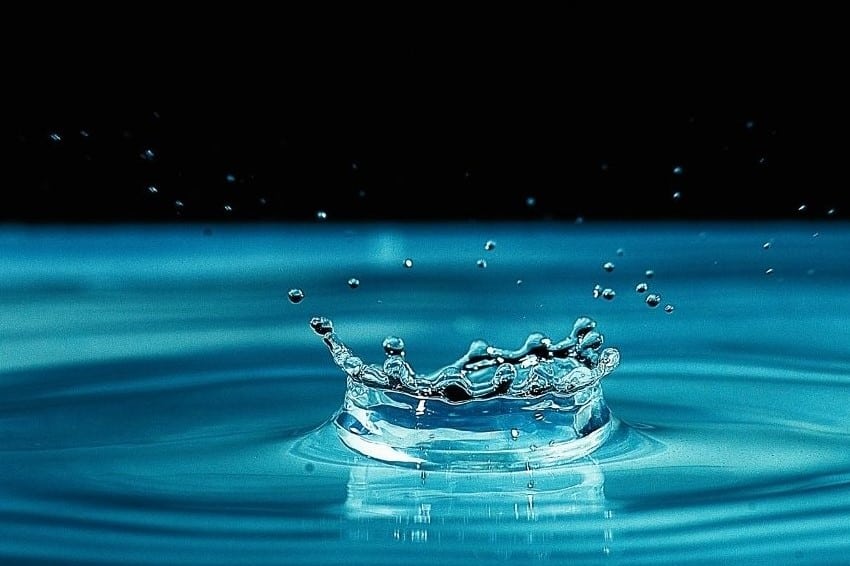The melting point of water (H2O) is the temperature at which solid ice turns into liquid water, which is zero degrees Celsius, 32 degrees Fahrenheit, or 273 degrees Kelvin.
The melting point of a pure substance is the temperature at which its solid and liquid forms can coexist in equilibrium. When a solid is heated, its temperature rises until it reaches its melting point. More heat will then convert the solid to a liquid without changing the temperature. Melting is one example of a physical change.
Melting is a reversible physical change because the melted ice cube can be refrozen. It is the temperature at which ice melts and changes from a solid to a liquid due to rising temperatures (water).

Table of Contents
What Is the Melting Point of Water?
Water’s melting point is the temperature at which it transforms from solid ice to liquid water. At this temperature, the solid and liquid phases of water are in equilibrium. Because the melting point varies slightly with pressure, there is no single temperature that can be considered the melting point of water.
In practice, the melting point of pure water ice at 1 atmosphere of pressure is very close to 0 °C, which is 32 °F or 273.15 K. Water’s melting and freezing points should be the same, especially if it contains gas bubbles, but if the water is free of nucleating points, it can supercool all the way down to -42 °C (43.6 °F, 231 K) before freezing. As a result, in some cases, the melting point of water is significantly higher than the freezing point.
Melting Process
Melting is the transformation of a substance from a solid to a liquid.
Melting occurs when the molecules of a solid move fast enough to overcome the attractions and allow the molecules to move past each other as a liquid.
In the case of the melting of water, when energy is added in the form of heat, the water molecules become excited and begin to move around. As more heat is added, the molecules move faster and faster, causing the molecules’ structures to loosen. This starts the transformation of solid ice into liquid water.
Concept of Boiling of Water
When boiling occurs, the more energetic molecules become gases, spread out, and form bubbles.
These bubbles rise to the surface and are carried into the atmosphere.
The energy required to convert a liquid to a gas is called the enthalpy of vaporization.
Furthermore, the thermal energy in the liquid is removed by gas molecules leaving the liquid.
As a result, the temperature of the liquid remains constant during the boiling process.
For example, while boiling, water will remain at 100oC (at a pressure of 1 atm or 101.3 kPa).
Summary
- The melting point for water is zero degrees Celsius, 32 degrees Fahrenheit, or 273 degrees Kelvin.
- Water melting is a physical change as ice cubes can be converted to liquid and liquid can be converted back to ice again.
- When water melts, the more energetic molecules of ice turn into liquid.
- During the melting process, the liquid’s temperature remains constant.
Related Topics
The pH of Distilled/ De-Ionized Water
Viscosity of Water
Water Potential
Is Water a Mixture?
Why is Water a Polar Molecule?
Weathering vs. Erosion| Short Overview
Sublimation Examples| Process & Case Study
Frequently Asked Questions
1. What is the specific heat of water?
Specific heat refers to the quantity of heat required to raise the temperature of one gram of a substance by one Celsius degree. Specific heat is usually measured in calories or joules per gram per Celsius degree. For instance, water has a specific heat of 1 calorie (or 4.186 joules) per gram per Celsius degree.
2. What is the surface tension of water?
Surface tension is a property of a liquid’s surface that allows it to resist an external force due to the cohesive nature of the water molecules.
At room temperature, the surface tension of water is approximately 72 mN/m, making it one of the highest surface tensions for a liquid. Only one liquid has a higher surface tension, and that is mercury, a liquid metal with a surface tension of nearly 500 mN/m.
3. Is water vapor a greenhouse gas?
Yes, water vapors are greenhouse gas. other examples are listed below:
4. Is water a mixture?
When you add enough energy to a mixture of hydrogen and oxygen, a chemical reaction (a chemical combination) occurs, resulting in water. Water is not a mixture; it is a pure substance.
5. What is the weight of water?
1 liter of water should weigh 1 kilogram.
1 liter equals 1000 cm3 and 1 kilogram equals 1 liter of water.
At 17 °C, one US gallon of water weighs 8.345 pounds or 3.785 kg, but one Imperial gallon of water weighs 10.02 pounds or 4.545 kg. Click here to find more details about the weight of water.
6. What is the density of water?
At 4.0 °C (39.2 °F), the density of water in g/ml is 0.9998395. This is equivalent to one gram per milliliter (g/ml) or one gram per cubic centimeter (g/cm3). Check out the full article, density of water g/ml.
7. How many cups are in a gallon?
A US liquid gallon is equal to 16 cups, while a US dry gallon is equal to 18.61 cups. In the United States, one cup equals half a pint (236.6 ml). Check out the full article, “How many cups are in a gallon”.
8. How many water bottles are in a gallon?
7.58 bottles of water equal one gallon in the United States, and 9.10 bottles of water equal one gallon in the United Kingdom. Check the full article here“how many water bottles is a gallon”.
9. Why does oil float on water?
Oil floats on water because its density is lower than that of water. Density in liquids is defined as the amount of mass that may be filled into a cubic meter of volume. Water has a density of roughly 1000 kg/cubic meter, while oil has a density ranging from 800 to 960 kg/cubic meter.
10. At what temp does water freeze?
Water’s normal freezing and melting points are 0 degrees Celsius or 32 degrees Fahrenheit. Check the full article “At what temperature does water freeze?”.
11. What Is the Boiling Point of Water?
At one atmosphere of pressure, the boiling point of water is 100 °C or 212 °F (sea level). The value, however, is not constant. The boiling point of water is affected by atmospheric pressure, which varies with elevation. Water boils at a lower temperature as you gain altitude (e.g., ascending a mountain), and it boils at a higher temperature as atmospheric pressure rises (coming back down to sea level or going below it).
The boiling point of water is also influenced by its purity. Impurities in water (such as salted water) cause it to boil at a higher temperature than pure water. This phenomenon is known as boiling point elevation, and it is one of the matter’s colligative properties.
More Interesting Topics
Sulfur Electron Configuration
Diffusion Coefficient| Mass Diffusivity
Dynamic Viscosity-An Overview
Hydrogen Bond| Definition & Easy Explanation
Unit Weight of Water| Specific Weight
- BCl3 Lewis Structure in four simple steps - November 1, 2023
- PH3 Lewis Structure in four simple steps - October 8, 2023
- PF3 Lewis structure in four simple steps - September 24, 2023



